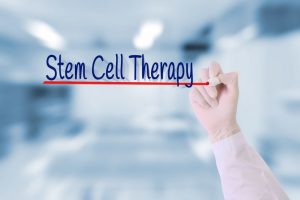Stem cell therapy is touted as the most innovative way of treating autoimmune and degenerative diseases, such as type II diabetes, Alzheimer’s disease, Parkinson’s disease or ALS. Stem cells may also help people with spinal cord injuries and other severe types of trauma.
Thus, a definition of stem cell therapy is: a form of regenerative treatment that attempts to replace damaged specialized cells with healthy cells. The new cells are harvested from the patient, thus there is no risk of incompatibility. They are unspecialized cells and, through specialized treatment, turned into specialized cells (muscle cells, marrow cells, etc.).

How Effective Is Stem Cell Therapy?
Compared to surgery or other forms of treatment, stem cell therapy is not a quick fix for the health problem. Doctors attempt to nurture healing by giving the organism the “raw materials” it needs to repair a damaged area.
In many cases, stem cell therapy is beneficial in improving the quality of life for the patient, even if it does not fully cure their health problem. For example, for people with spinal cord injury, it is possible to partially regain mobility in the limbs.
Where Are Stem Cells Harvested From?
There are various sources of stem cells in the human body. The most popular form of preserving stem cells is at birth, from the umbilical cord. However, doctors can also harvest stem cells from adult patients from:
- Adipose (fat) tissue
- Bone marrow
- Placenta.
Another method of obtaining stem cells is from 3 to 5 days old embryos. However, there are major ethical issues connected with this type of harvesting, as the embryo would be destroyed afterwards. Thus, both donors and patients must be fully informed and agree on this type of stem cell therapy.
How is the Stem Cell Therapy Performed?
There are several ways of administering the stem cells:
- Intravenous
- Into the spinal canal
- Injected into the problem area (hip, knee, arm, etc.).
Thus, stem cell therapy is minimally invasive and is mostly painless. These are some of the major benefits of this type of treatment compared to older and less successful therapies.
Who Regulates Stem Cell Therapy?
Stem cell therapies must be approved by the Federal Drug Administration (FDA). At the present, there are two types of such therapies that have full FDA approval:
- Fedratinib, a treatment for bone marrow scarring
- Glasdegib, a treatment for elderly patients (over 75) with acute myelogenous leukemia.
However, the FDA is constantly reviewing various other types of stem cell therapy and some of them may receive approval as you are reading this article. A stem cell therapy Highlands Ranch clinic professional suggests that as a basic safety precaution, patients should always ask whether the therapy they propose to undertake has been reviewed by the FDA. Also, ask for clarifications whenever you do not understand something.
Precautions Concerning Travelling Abroad for Stem Cell Therapy
Some patients are lured by promises of more affordable costs for stem cell therapy in other countries. The first thing to remember is that the FDA has no oversight of therapies, treatments and medical procedures performed outside the territory of the USA.
Therefore, patients should always weigh the affordability of the treatment against safety and the possibility to obtain relief in case of malpractice.
